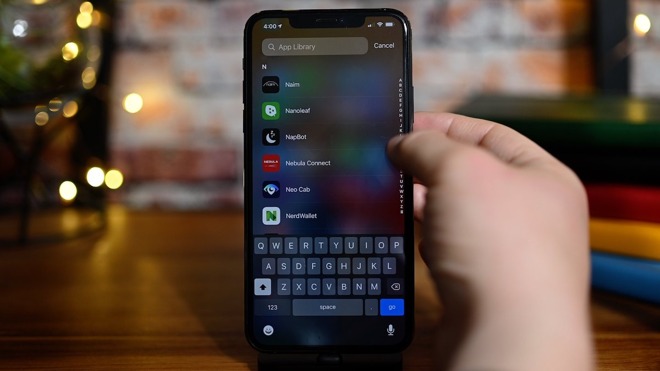Display expert again claims 'iPhone 12 Pro' will lack 120Hz ProMotion
Apple's rumored "iPhone 12" models won't feature a 120Hz ProMotion display, a self-described display analyst claims.

A ProMotion display could result in smoother scrolling and animations on an iPhone.
Multiple reports, including those by accurate leaker Jon Prosser, have suggested that 2020's "iPhone 12" models will support the upgraded display type. The 120Hz displays are expected to be restricted to so-called "iPhone 12 Pro" models.
Ross Young, a self-proclaimed display expert and founder of Display Supply Chain Consultants, is bucking rumors with claims that none of the 2020 models will feature the upgraded technology.
None of Young's "contacts" could corroborate the inclusion of ProMotion displays on the "iPhone 12." Instead, he says that the panels will arrive with 2021's "iPhone 13" lineup.
Young previously said that the "iPhone 12" models would lack low-temperature polycrystalline oxide (LTPO) backplanes -- a technology he claims would be essential to ProMotion displays.
There are currently smartphones with 120Hz refresh rates on the market, and Apple's own iPad Pro sports a ProMotion display but not LTPO.
A higher screen refresh rate through Apple's ProMotion display would result in smoother animations and scrolling. According to Prosser, the refresh rate will be variable between 60Hz and 120Hz.

A ProMotion display could result in smoother scrolling and animations on an iPhone.
Multiple reports, including those by accurate leaker Jon Prosser, have suggested that 2020's "iPhone 12" models will support the upgraded display type. The 120Hz displays are expected to be restricted to so-called "iPhone 12 Pro" models.
Ross Young, a self-proclaimed display expert and founder of Display Supply Chain Consultants, is bucking rumors with claims that none of the 2020 models will feature the upgraded technology.
None of our contacts could corroborate iPhone 12 Pro models as 120Hz. They told us 2021. So, they are off our latest 120Hz list.. pic.twitter.com/uTQ7uinMUQ
-- Ross Young (@DSCCRoss)
None of Young's "contacts" could corroborate the inclusion of ProMotion displays on the "iPhone 12." Instead, he says that the panels will arrive with 2021's "iPhone 13" lineup.
Young previously said that the "iPhone 12" models would lack low-temperature polycrystalline oxide (LTPO) backplanes -- a technology he claims would be essential to ProMotion displays.
There are currently smartphones with 120Hz refresh rates on the market, and Apple's own iPad Pro sports a ProMotion display but not LTPO.
A higher screen refresh rate through Apple's ProMotion display would result in smoother animations and scrolling. According to Prosser, the refresh rate will be variable between 60Hz and 120Hz.

Comments
The Mac security theatre is quite telling.
And we don’t need it, just some are whining about not having it because 120 is bigger than 60.
On the other hand, did you ever think that maybe Apple has learned that force touch isn't as intuitive and functional as they hoped and decided that long touches are a better alternative? And I'm sorry that some app developers are charging more or more often for their apps. I can't imagine why they went along with the secret campaign by Apple to raise app costs. What motivation could they have to not sell all their apps for a one-time 79 cent charge (if that was ever a price point somewhere; it wasn't in the US)?
i’m really not sure whether we actually need 120Hz, or even 90Hz, particularly as it badly affects battery life. I don’t see what Apple can do that would be so special as to negate that problem. Other than to have an even bigger battery.
I’ve never found anything bad about 120Hz it’s hard to understand people having problems watching it. I just don’t see the need for it on an iPhone. It’s great for iPad gaming and 3D projects though.
The reason usually given for removing Force Touch has nothing to do with cheaper phones. It has to do with the apparent problems Apple was having getting it to work properly on the large iPad screens. Additionally, few developers were taking advantage of it, so it was inconsistent. People never knew whether it was working or not. While I like it, I understand the phones we’ll be buying this year won’t have it, and that’s fine. They’re removing it from the watch too, from what I read.